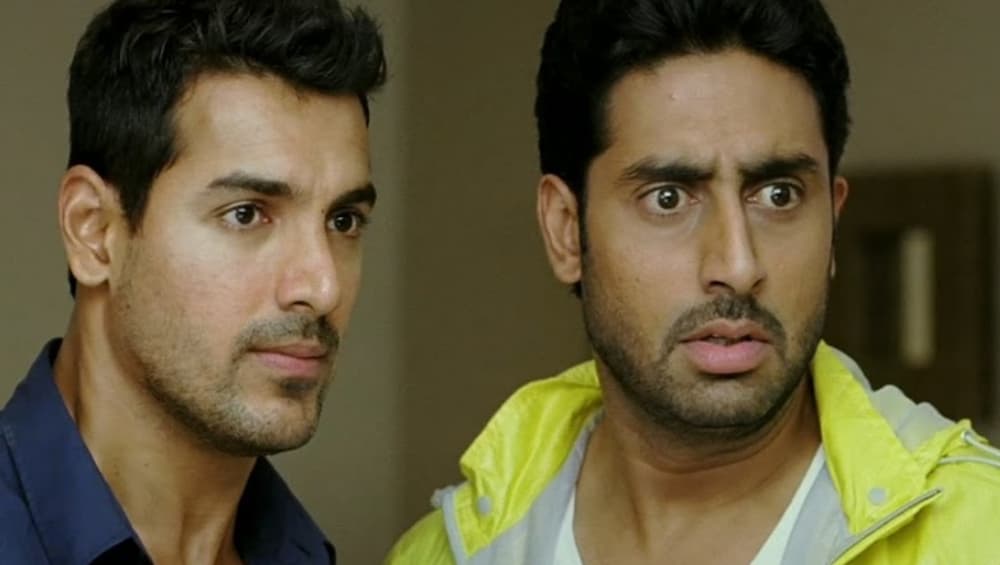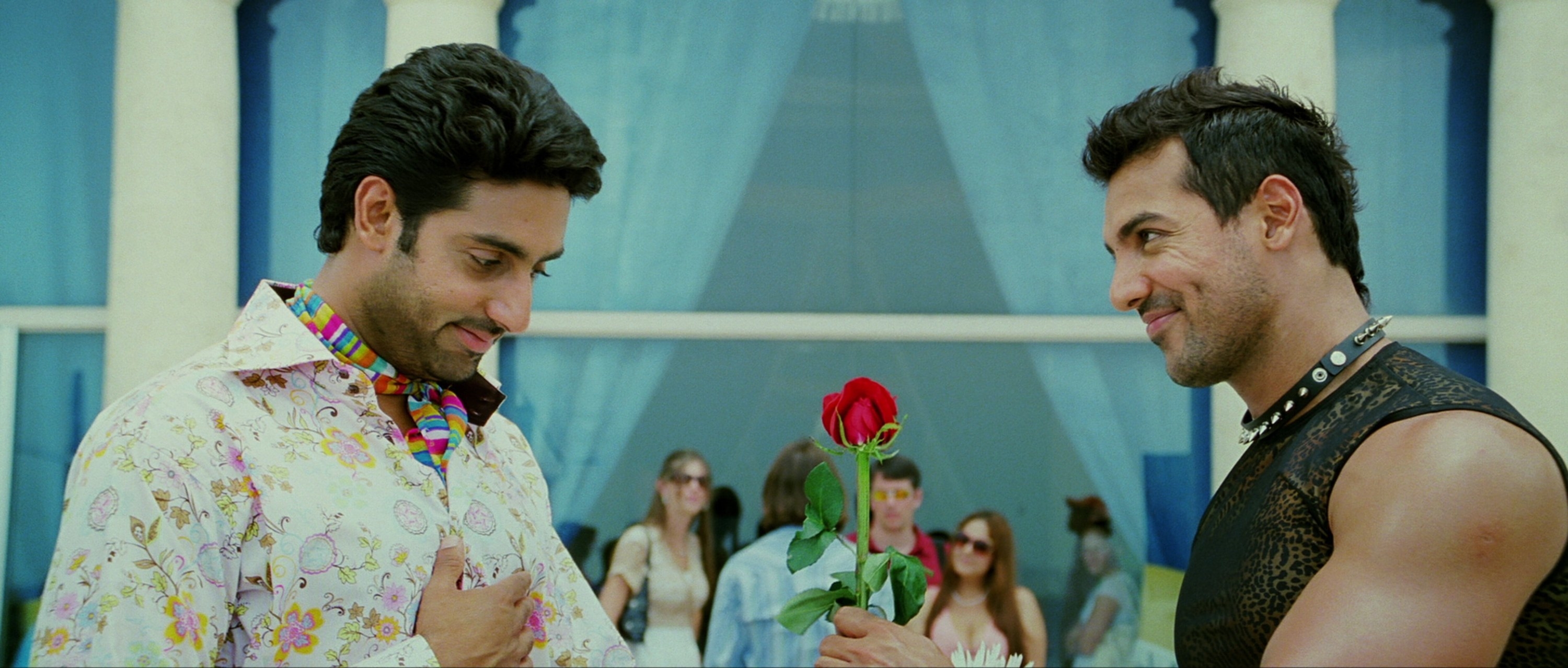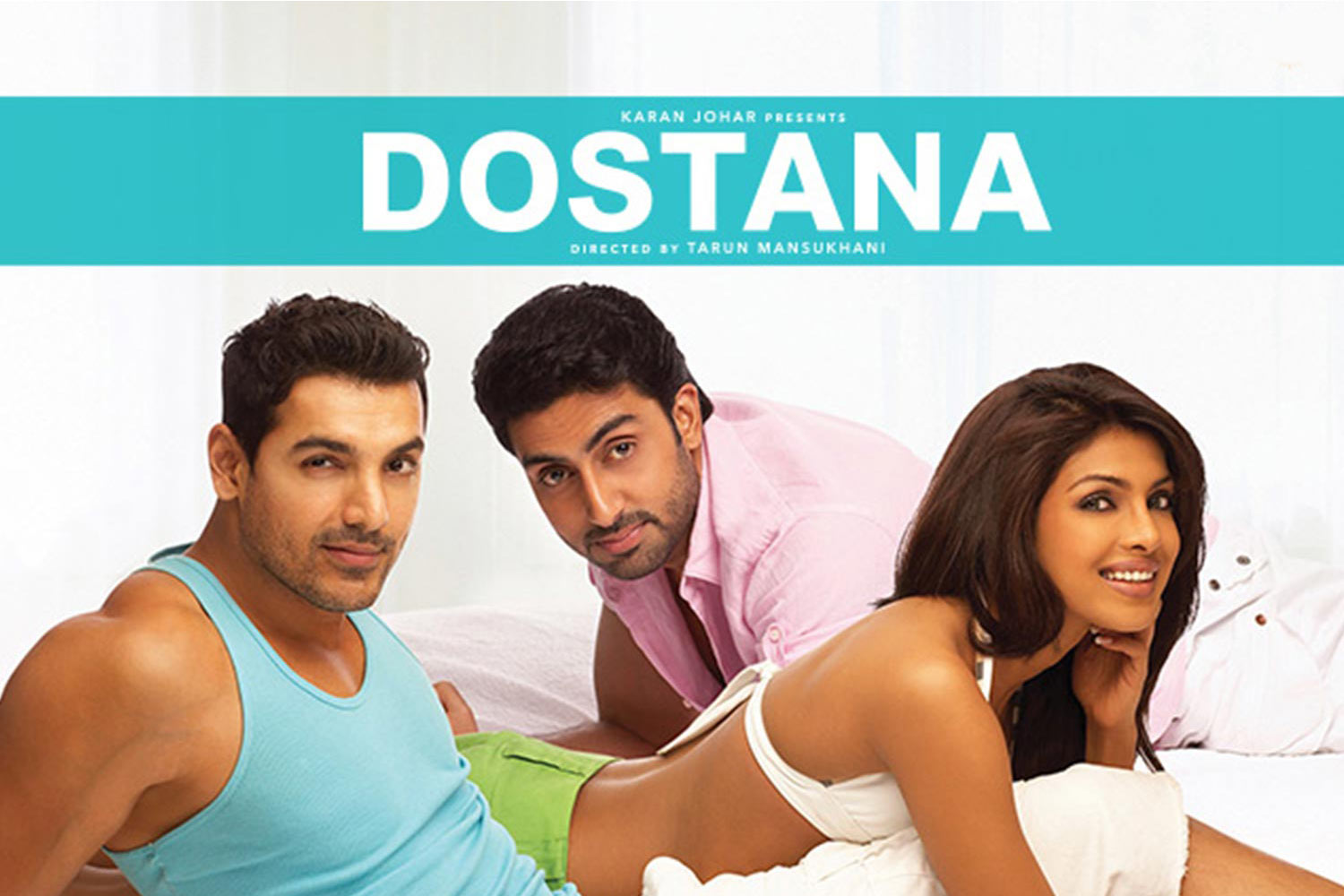Is Dostana LGBTQ? Exploring Bollywood's Groundbreaking Comedy
Detail Author:
- Name : Orin Turcotte DVM
- Username : treva84
- Email : davon94@hotmail.com
- Birthdate : 2002-07-14
- Address : 44597 Jones Overpass Apt. 932 North Madysonstad, NM 24999-0270
- Phone : (706) 291-9882
- Company : Sanford PLC
- Job : Animal Control Worker
- Bio : Quisquam dicta fuga qui et deserunt dolorum. Voluptatum fugiat nam et cupiditate ea nulla. Optio dolorum qui ab illum.
Socials
twitter:
- url : https://twitter.com/trace.tremblay
- username : trace.tremblay
- bio : Incidunt consequatur modi aut est nostrum. Et qui vitae asperiores eum iusto. Debitis cumque magni aut aut et repellendus autem sunt.
- followers : 4748
- following : 646
facebook:
- url : https://facebook.com/trace.tremblay
- username : trace.tremblay
- bio : Placeat nobis cumque delectus eos qui.
- followers : 5131
- following : 2346
instagram:
- url : https://instagram.com/ttremblay
- username : ttremblay
- bio : Quo nisi omnis perferendis commodi. Saepe fugiat rerum aspernatur et.
- followers : 1165
- following : 954
linkedin:
- url : https://linkedin.com/in/ttremblay
- username : ttremblay
- bio : Et reiciendis corrupti et fuga soluta.
- followers : 4185
- following : 1470
When we think about Bollywood films that have sparked conversations around LGBTQ+ themes, the 2008 movie Dostana often comes to mind, doesn't it? This film, in a way, broke new ground for mainstream Hindi cinema, even if its approach was, you know, a bit unconventional. It's a question many people still ask: Is Dostana LGBTQ? Well, that's a really interesting point to consider, especially when you look back at its impact and what it set out to do.
The movie, directed by Tarun Mansukhani, and produced by Karan Johar's Dharma Productions, featured a big cast including Priyanka Chopra, John Abraham, and Abhishek Bachchan. It was, you might say, a rather significant moment for Bollywood back in 2008. The film, which turns 15 today, more or less centered on a rather specific premise that got people talking quite a lot.
It's fair to say that Dostana certainly brought attention to sexual orientation, a topic that, you know, wasn't really discussed much in mainstream Indian films before this. This film, quite honestly, is credited with initiating a public discourse on the subject in India, which is, actually, a pretty big deal. So, let's explore what made Dostana such a unique, and at times, debated, film in the context of LGBTQ+ representation.
Table of Contents
- Dostana: The Premise and Its Intent
- Karan Johar's Perspective on Visibility
- Public Reception and Criticism
- LGBTQ+ Rights in India: Then and Now
- Frequently Asked Questions About Dostana
Dostana: The Premise and Its Intent
The core idea behind Dostana, a 2008 romantic comedy, was, in some respects, quite simple. It follows two men who, you know, decide to pose as a gay couple. Why? Well, it was all so they could secure an apartment with their female roommate, Priyanka Chopra's character. Hilarity, as you might guess, pretty much ensued as they tried to keep up their charade. This setup was, arguably, the entire engine of the film's comedy.
Initially, the script was, actually, conceived as a story of friendship, which is, you know, a very common theme in Bollywood. However, the script was later adapted to include a homosexual premise, making it one of the first of its kind in mainstream Hindi cinema. This adaptation, in a way, fundamentally changed the film's direction and its potential impact, too. It's a rather interesting shift from its original concept.
A Story of Friendship or Something More?
Director Tarun Mansukhani made a point to clarify the nature of the male leads' relationship. He said, "Dostana is about friendship and not gay sexuality." He emphasized that John and Abhishek play best friends, not a gay couple, in the film. This statement, in a way, highlights a potential tension between the film's premise and its intended message, or perhaps, you know, how it wanted to be perceived by a broad audience. It's a fine line, isn't it?
The movie showed the male leads pretending to be a couple, but their actual relationship was, you know, one of close buddies. They were, in fact, just friends who found themselves in a rather tricky situation when they found it difficult to find a house to rent. This particular situation, in some respects, forces them into their charade, which is the main source of the film's humor and, you know, the central conflict. It's all about that initial setup, really.
The Mistaken Identity Device
Tarun Mansukhani's Dostana, or "Friendship" as it translates, is, quite simply, the first commercial popular feature film from India to exclusively engage in a queer dialogue. It did this, in a way, by using the device of 'mistaken identity.' This particular plot device is, you know, a very common one in comedies, but its application here was, arguably, quite novel for Indian cinema. It allowed the film to explore themes without, perhaps, fully committing to them in a direct way.
The whole premise of two straight guys pretending to be gay in order to secure an apartment was, you know, the driving force. This setup, in a way, allowed for many comedic situations and misunderstandings. The film playfully explores themes of friendship, love, and cultural expectations, all against the backdrop of sunny Miami. It's a rather lighthearted approach to some, you know, pretty serious topics, too.
Karan Johar's Perspective on Visibility
Karan Johar, the producer of Dostana, still considers the film an important mainstream Bollywood film as far as the visibility of the LGBTQ+ community is concerned. To be fair, there is, you know, some merit to his argument. He sees it as a step, a very early one, in bringing these conversations into the public eye through popular media. This perspective, in a way, frames the film as a pioneering effort, even with its comedic elements.
He has, you know, openly discussed the film's role in this context. For him, it was about, you know, putting the idea of homosexuality, even if in a comedic and indirect way, onto the big screen for millions of people to see. This, in his view, contributed to a broader awareness, which is, actually, a pretty significant goal for any filmmaker trying to push boundaries. It's a big step, really, for mainstream cinema.
A Landmark Moment for Bollywood
In 2008, when Karan Johar’s Dharma Productions released Dostana, it was, quite frankly, a landmark moment for Bollywood. This film was, you know, the first mainstream Indian film with a gay element, and it has been credited for that. It brought attention to sexual orientation, a topic that was, you know, pretty much unspoken in public cinematic spaces before its release. This alone, arguably, makes it stand out.
The film's commercial success and immense popularity meant that its themes, however presented, reached a vast audience. This widespread reach is, you know, a very important part of its legacy. It was a commercial and immensely popular film in the Bollywood media, which is, you know, why its impact was so widely felt. It's a pretty big deal when a film like this captures so much public interest.
Dostana 2 and Future Representation
After 17 years of ups and downs, Dostana 2 is finally on track, as reports suggest that Karan Johar is all set to take the sequel on floors towards the end of 2025. This news, you know, has naturally sparked new conversations about the franchise's approach to LGBTQ+ themes. It's interesting to see how things have, actually, changed since the first film came out.
Karan Johar has said that 'Dostana 2' will feature accurate representation of gay characters. This statement is, you know, a very important one, especially given the discussions around the first film. It suggests a more direct and, perhaps, more sensitive approach to the subject matter, which is, arguably, a sign of the times. It's a promise of, you know, a different kind of visibility this time around.
Public Reception and Criticism
Despite the laughs and entertainment, Dostana received mixed reactions. While some hailed the film for challenging the homophobia in the country, many felt it showed an insensitive portrayal. This mixed reception is, you know, quite typical for films that try to push boundaries, especially on sensitive topics. It's a pretty common pattern, really, when you introduce new ideas into mainstream media.
The film used elements of being gay as a comedic device, which was, you know, where some of the criticism stemmed from. Some viewers felt that the humor came at the expense of genuine representation, or that it, you know, reinforced stereotypes rather than breaking them down. This balance between comedy and sensitive portrayal is, arguably, a very tricky one to get right in any film.
Challenging Homophobia or Insensitivity?
While some praised Dostana for challenging homophobia in India, others felt it showed an insensitive depiction of gay people. This divide in opinion highlights the complexities of representation, particularly when it's introduced in a comedic format. It's a question of whether the laughter came from understanding or, you know, from a place of discomfort with the subject itself. That's a pretty big distinction, actually.
The film's use of 'mistaken identity' meant that the characters were pretending to be gay, rather than actually being gay. This, you know, meant that the audience was always aware of the 'joke,' which some found problematic. It's a point of contention for many who look for more authentic and, you know, respectful portrayals of LGBTQ+ individuals in cinema. It's a valid concern, in some respects.
The Dialogue It Sparked
Dostana was the first mainstream Indian film to address homosexuality and is credited with initiating public discourse on the subject in India. Its release brought attention to sexual orientation, which is, you know, a very important step. Even with its flaws, the film, arguably, opened doors for conversations that were previously, you know, pretty much shut off from the mainstream. It's a significant contribution, really.
Whether you liked the film or not, its impact on public conversation is, you know, undeniable. It made people talk, debate, and, perhaps, even think differently about a topic that was often, you know, hidden away. This act of bringing a sensitive subject into the light, even through comedy, is, in a way, a powerful thing for any medium to achieve. It's about getting the conversation started, after all. You can learn more about Bollywood's evolving narratives on our site, and link to this page exploring LGBTQ+ representation in Indian cinema.
LGBTQ+ Rights in India: Then and Now
When Dostana was released in 2008, the legal landscape for LGBTQ+ individuals in India was, you know, very different. It was 2018 when LGBTQ+ relationships between consenting adults finally became legal, which is, actually, a huge milestone. This change in law has, in a way, shifted the entire context in which films like Dostana are viewed and created. It's a pretty big deal, you know, for the community.
Marriage equality is still a faraway dream we need to keep fighting for, so not everything is, you know, hunky-dory. This ongoing struggle means that while some progress has been made, there's still, you know, a lot of work to do. The discussion around films like Dostana continues to evolve as the legal and social environment changes, which is, arguably, a natural progression. It's a dynamic situation, really.
The journey from 2008 to today shows a significant shift in public and legal acceptance. Films that once, you know, used gay themes for comedic effect might now be expected to offer more authentic and respectful portrayals. This evolution is, in a way, a testament to the ongoing efforts of activists and the growing awareness within society. It's a pretty important change, all things considered. For more insights into how cinema reflects societal changes, you might find this article on Bollywood's influence on Indian culture quite interesting.
Frequently Asked Questions About Dostana
Was Dostana a commercial success?
Yes, Dostana was, you know, a commercial and immensely popular film in the Bollywood media. It managed to draw a large audience, which is, actually, a pretty good indicator of its widespread appeal at the time. Its success meant that its themes, even if comedic, reached a very broad segment of the population, which is, in a way, a significant achievement for any film.
What was the main plot of Dostana?
The main plot of Dostana, a 2008 romantic comedy, follows two men who, you know, pretend to be a gay couple. Their motivation for this charade was to secure an apartment with their female roommate. Hilarity, as you might expect, pretty much ensued as they tried to navigate their elaborate pretense, leading to many comedic situations and misunderstandings, too. It's all about that initial setup, really.
Why is Dostana considered important for LGBTQ+ visibility in Bollywood?
Dostana is considered important because it was, you know, the first mainstream Indian film with a gay element. It brought attention to sexual orientation, and it's credited with initiating public discourse on the subject in India. Karan Johar, in a way, still sees it as an important film for the visibility of the LGBTQ+ community, even if its portrayal was, you know, primarily comedic. It really did open up conversations, actually.


